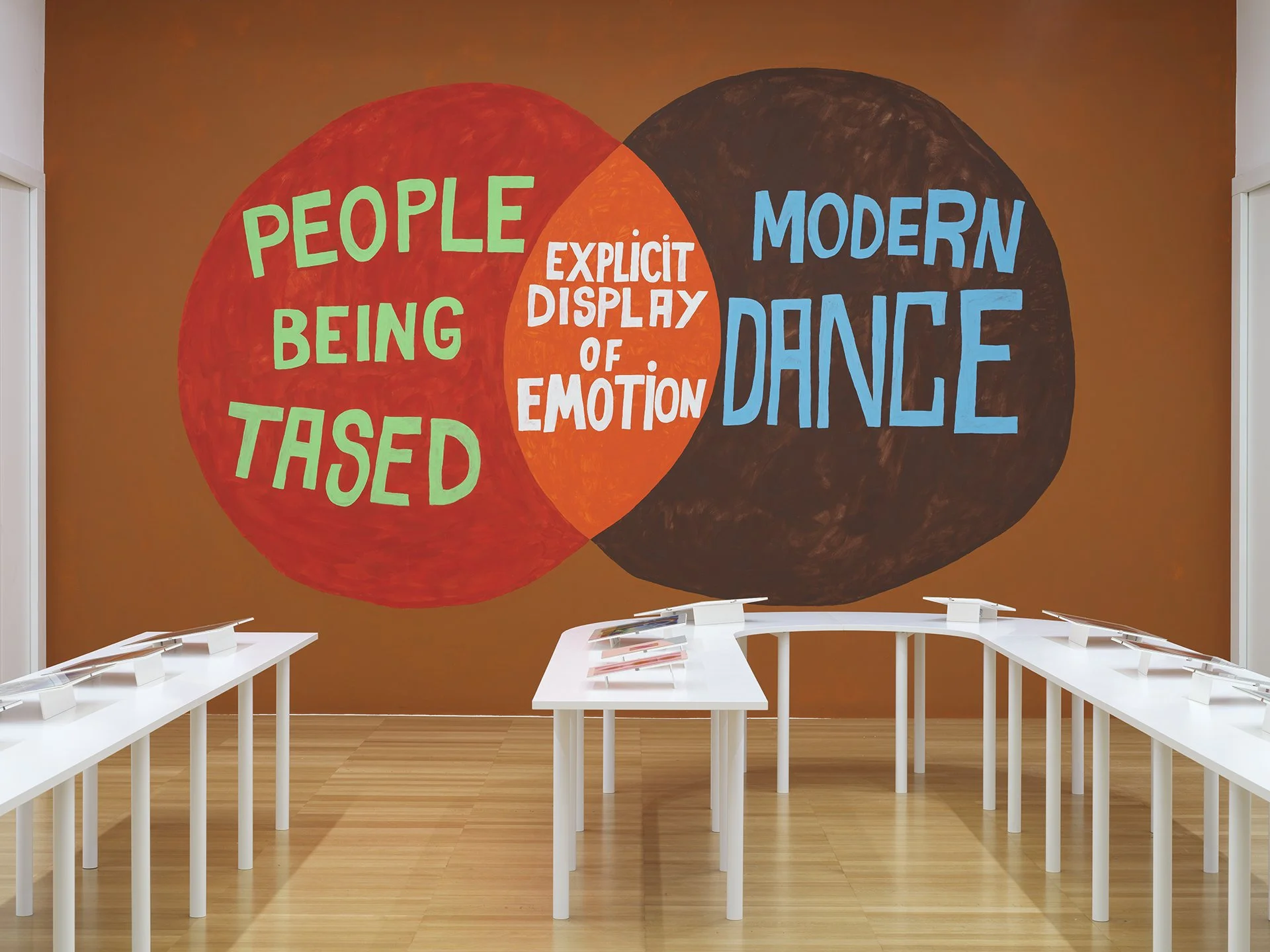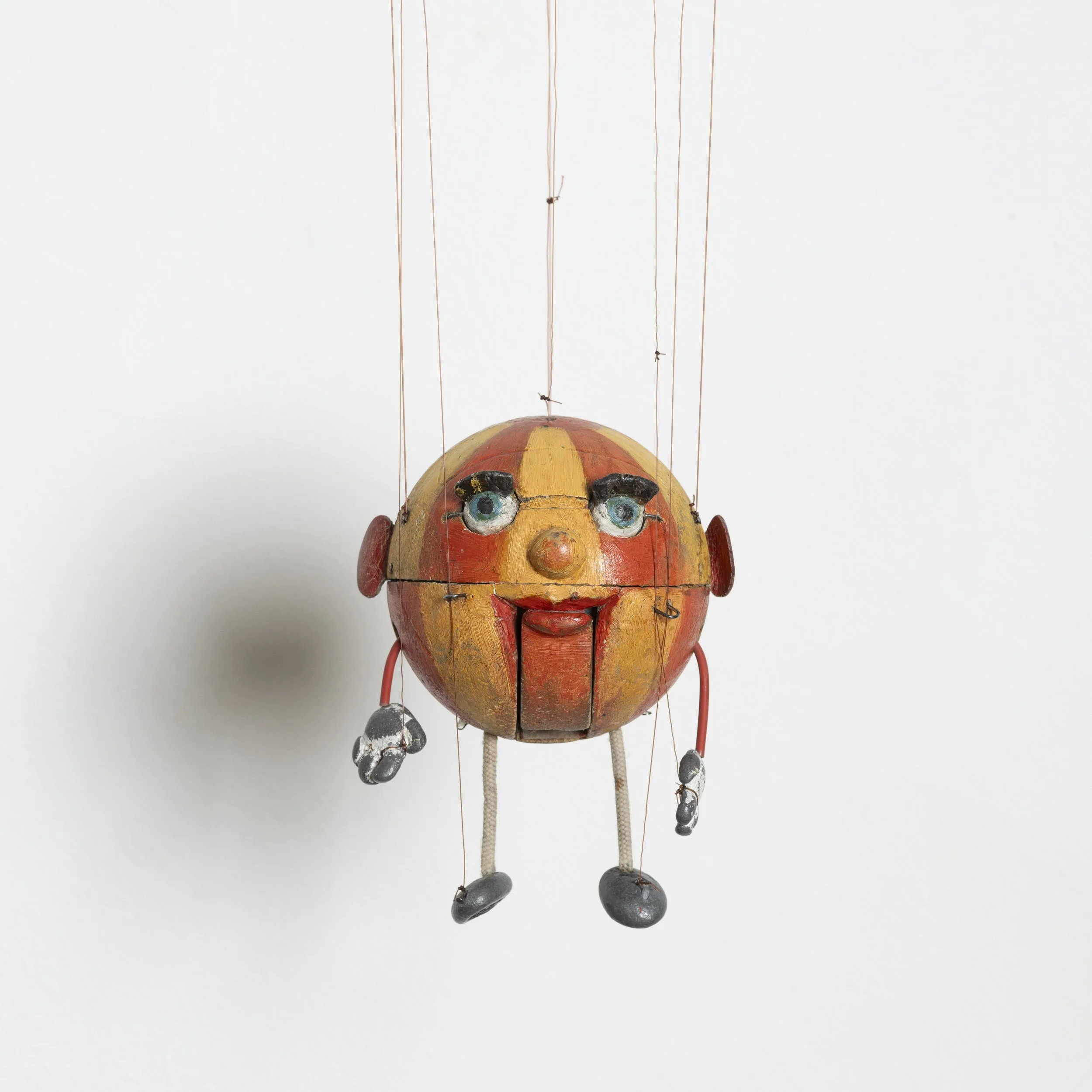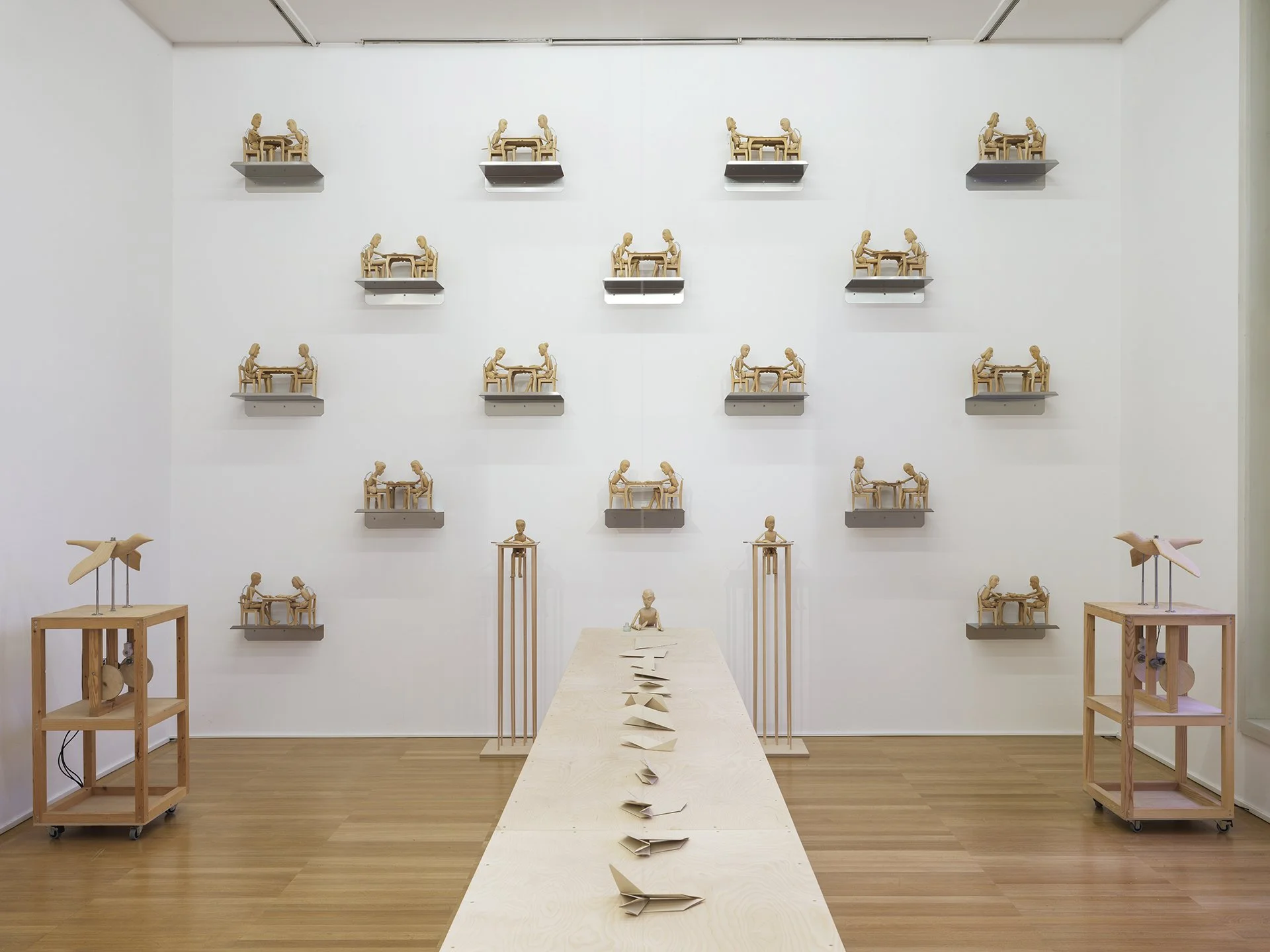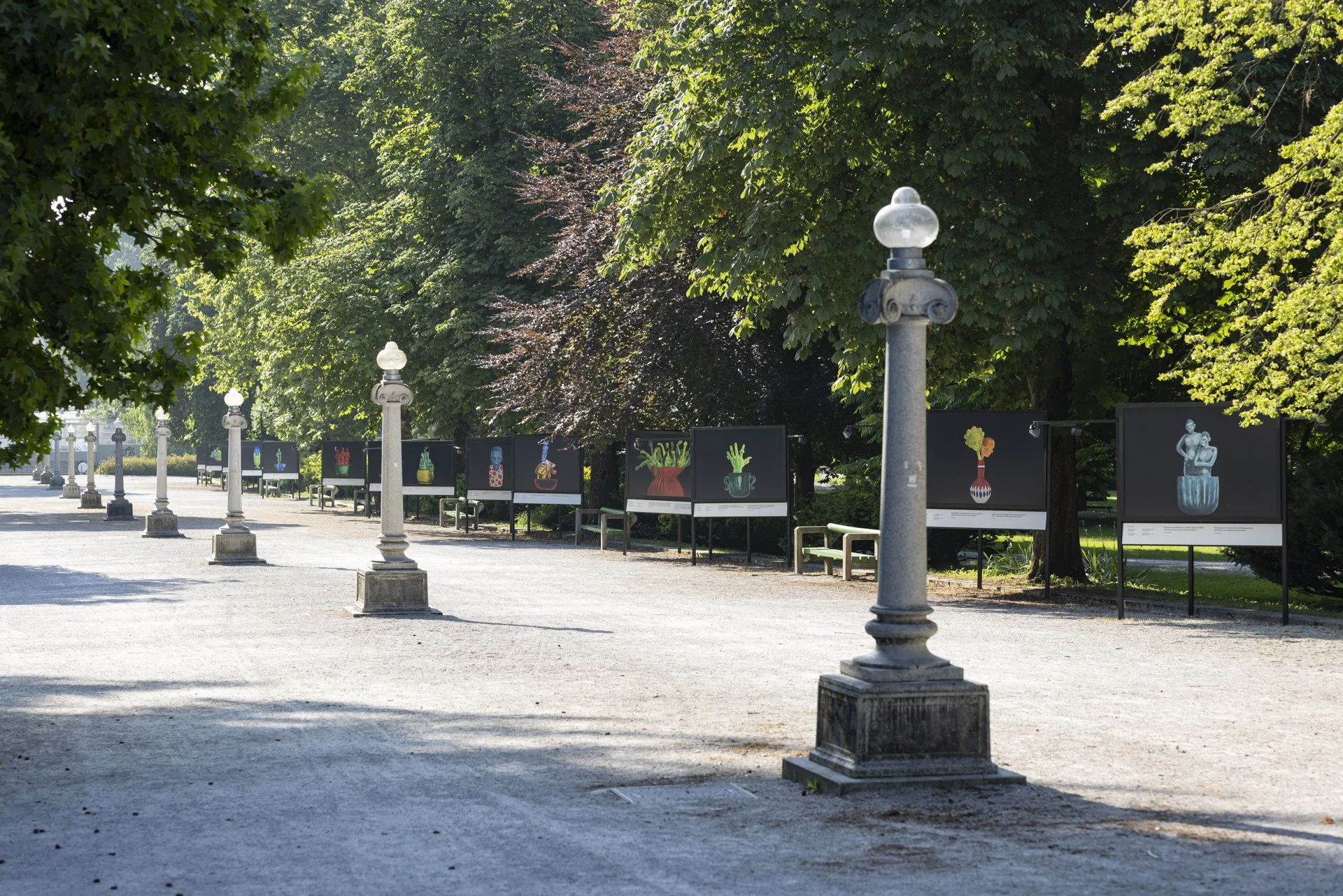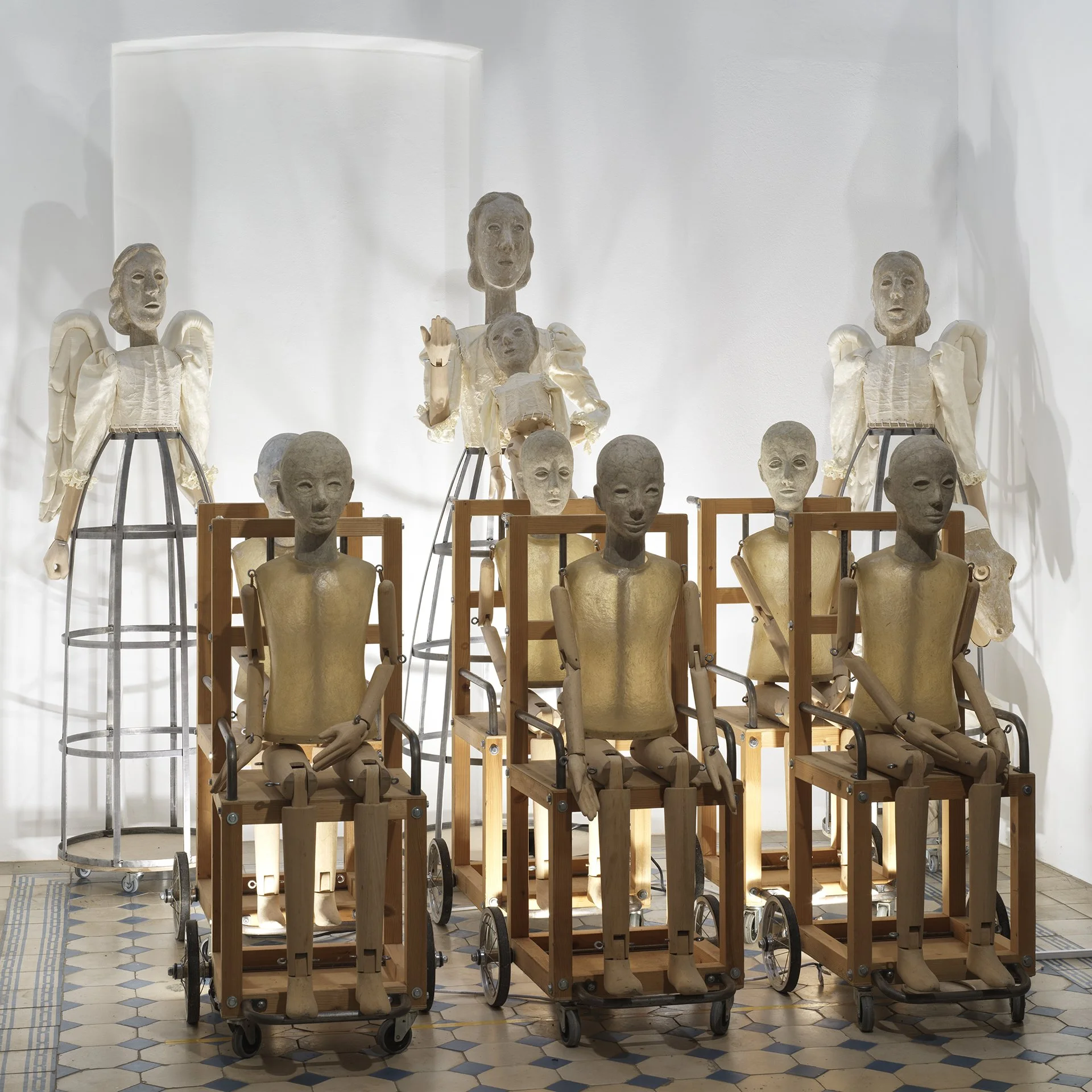Hot Coffee conversation with Basel-based curator, academic, philosopher, and head of the Institute Art Gender Nature HGK Basel FHNW Chus Martinez on using art to recaptivate the citizenship
Published Monday, July 7, 2025
Chus Martinez is a renaissance woman, a curator with decades of important exhibitions behind her, a thinker of great integrity and depth. She is currently serving as the head of the Institute Art Gender Nature HGK Basel, FHNW. FHNW is one of Switzerland’s leading universities of applied sciences and arts, actively involved in teaching, research, continuing education, and service provision, both innovative and practice-oriented. Martinez believes in the democratic and transformative power of conversation, where art and artistic practice are at the center. It was an immense intellectual pleasure to interview her for this Hot Coffee Conversation, also because so many questions we are currently facing in the arts are overwhelming and related to the very core structure and meaning of curatorial and institutional practices. Several questions are related to the 36th Ljubljana Biennale of Graphic Arts. The Oracle curated by Martinez and on view through October 12.
Nina: Imagine you are in your favorite coffee or tea spot. Where is it? What are you drinking? What are the three things you see right now?
Chus Martinez: Yeah, I have several favorite spots, there is one in Basel. I am drinking matcha normally, a latte with vegetable milk, and then I'm seeing people, which is kind of my favorite exercise. To see people, observe them, see what they do, and wonder if they would like to see art and talk about it. These days, I see myself revolving around the same question: what is it that separates people from culture? Is there something we can do to bring people closer to each other and art?
Installation view, 36th Ljubljana Biennale of Graphic Arts — The Oracle, June 6-October 12,2025.Photo by Jaka Babnik. MGLC Archive.
Nina: Can you please talk about the title of the Ljubljana Biennale of Graphic Arts, The Oracle, and how it reflects your goal of ‘regenerating the damaged tissue or regenerating democracy’ as stated in the column you wrote for Mousse Magazine.
CM: I confess I never thought about The Oracle as a title until the very moment that William Kentridge invited me to participate in the public program for a project he was doing for the last edition of the Venice Biennale. He asked me to be his oracle; he was in conversation with me, asking me questions, and I had a minute to answer; it was like a game. When I received the invitation to curate the Ljubljana Biennale, I thought that game could be extended to every person, every one of us could be the oracle. Could we just decide on the spot to ask very important questions? Would you ask very important questions from a chair that you are occupying, probably at your work? Or, you know, what is a good time? Where is the place where we ask important questions? And for me, the answer is very clear.
Exhibitions and places of culture are the places where I ask those questions, but I also desire everyone else to do it. So, I really trust culture. There is absolutely nothing I can trust more than art and culture. How come nobody does? How come that everyone adopts the cynical voice, and is that full of culture at the same time? Why? Because if you start being cynical about culture, it is like a snowball effect with very damaging social consequences. So, you can just not do that without reflecting on what it means? And that's how the title came about. What if we are very close to it, but we are just asking you to find it relevant for you, or to just allow the embrace to happen? We love you. Definitely. We do. I think art and culture love people; they want to be there for those who recognize the values of freedom and the values of equality. How come nobody wants to listen? You know, nobody wants to receive our love, or very few.
Installation view, 36th Ljubljana Biennale of Graphic Arts — The Oracle, June 6-October 12,2025.Photo by Jaka Babnik. MGLC Archive.
Nina: What would be your definition of culture?
CM: I'm a passionate person about literature, contemporary art, dance, theater, forms of organization, co-creation, collectives, everyone who puts efforts together with the average hope of contributing to a better world, in a way, to a form of living that is a little bit different than the form of living that suffers under standard capitalism, forms of work and organizing yourself in labor that are very known and very common sensical, and so on. So, for me, culture is a substance able to transcend those common-sensical moments. It is really important to define concerns that go beyond that, are perhaps difficult to express, but are very relevant to us, forms of expression in general; this is what I call culture.
Installation view, 36th Ljubljana Biennale of Graphic Arts — The Oracle, June 6-October 12,2025.Photo by Jaka Babnik. MGLC Archive.
Nina: There is a wide range of artists within the 25 whom you have selected for this 70th anniversary edition. What were the criteria you used for this selection?
CM: I do a lot of studio visits, a lot, many of them remote. I cannot travel to all these places. Traveling is actually quite difficult for many reasons, but still, you can keep on connecting with people and also reviewing portfolios of many, seeing works on Instagram. So, at the very moment that the subject was forming in my mind, can we explore the many ways that we surrogate pain? Can we actually understand? Then the machine also has the automaton, the history of puppet theater, and the very moment when all these subjects that form the core of the Biennale were coming together. Then little by little, I knew with whom I wanted to work. So, it's like in almost every project, there is a puppet or there is a moment of referring to it. In a way that was a low common denominator among all the projects. So yes, the selection was a little bit driven by the plot. Through the many possibilities I had, I needed to choose those that were more narrow or closer to that core, subject control, technology, ancient ways of adding pedagogy into the machine, and our relationship to it.
Installation view, 36th Ljubljana Biennale of Graphic Arts — The Oracle, June 6-October 12,2025.Photo by Jaka Babnik. MGLC Archive.
Nina: Did the geography of the artist play any role in your selection?
CM: I must be very honest; I did not approach the selection consciously looking at where the artists are coming from. I trust myself, that I'm quite diverse in my practice in general, and I was not approaching it via their identity, but the work, because I needed a certain platform. Some artists are based in Europe, but they are not from Europe, right? And, for the first time in my entire curatorial life, there are three Spaniards. But it was a little bit random, I mean, random given by the plot.
Installation view, 36th Ljubljana Biennale of Graphic Arts — The Oracle, June 6-October 12,2025.Photo by Jaka Babnik. MGLC Archive.
Nina: Founded in 1955 during the Cold War, the Biennale served as a meeting point of two ideologies. What do you think about this role for the Ljubliana Biennale now in the new and divisive geopolitical realities?
CM: I think that in this edition, a great desire was there to revitalize the biennial as a platform to ignite a debate on what makes a place specific and how the specifics of a place relate to global culture. We need to go into the specifics of certain moments in history and subjects to connect differently, not only in a geopolitical way. For example, this time, I decided to focus on the Slovenian puppet theater. I was very surprised that nobody did it before, but also the response of everyone was right, amazing. It's true. You know, when you experience a biennial repeatedly, you tend to almost forgot its value. The way that in the 1950s the puppeteers in Ljubljana invested in this new pedagogical method to pack neighborhoods and bring together normal people through childhood is fundamental to regenerating democracy today.
The answer for me was in front of our noses, and it's so beautiful to reflect on our historical moment, where young people are faced with social media, TikTok, and all of that. But, the immense investment, I think, in the 1950s, the government proposed amazing think tanks and ideas to make that puppet theater very important, with more than one stage. So, it was an investment, a collective investment, in the common good, because many playwrights were working for children. And I think that this question of, what are we giving to the younger generations? How are we organizing ourselves? How was it in the past? It resonated, on the day of the opening, the people were exactly saying that the Biennial, historically, was there for this reason to reflect on elements of our past. It was there to see how these elements resonate, not only in the city, not only in Slovenia, but in the whole region. And yeah, I think that there is an ambition to regenerate the biennial through all these elements.
Installation view, 36th Ljubljana Biennale of Graphic Arts — The Oracle, June 6-October 12,2025.Photo by Jaka Babnik. MGLC Archive.
Nina: You wrote that for you, exhibitions are probing spaces, and how every exhibition is based on the values that you want to see. So, do you feel that in The Oracle were able to probe it fully, through the locations, through the artists, through weaving together all the strands of thoughts and practices?
CM: You know, we have very limited means, but with those limited means, you also propose a model through the Ljubljana Biennial that is humble yet relevant. It is a model of acting in an event culture that is not addressed to collectors and private money only, but to the citizenship. And this is what is very important today, because it may happen in every city that we know. In every city, it is composed of the citizens, and it is the citizens who vote and believe, and trust. So, if we lose them because we are separated from them in many ways, then it happens everywhere. Has it happened in this country? Yeah, and I think I don't know many of you may come from very, very educated backgrounds. My family is not from a very educated background, and many of my family members are very near and on the far right. I know by experience that you can talk, and you can change an opinion. It is possible, and we have seen it. We have seen the race, for example, in Spain, of really important projects of the left only six years ago, and now they all have disappeared. And what you see is the reappearance of a traditional, very religious, and very traditionalist mindset? Only six years of difference. We are not talking about 100 years.
So, do I think that these types of biennials may help to reinvigorate the process? Yes, because they make you enthusiastic and they give you new energy. Can those events do it alone? No, they are like a wave. When you are a surfer, waves just produce a certain directionality, and it is up to us to take that or not. So, you know, at the end, it's all those active powers that are very important in culture. If the citizens want to see it, and then therefore activate many other impulses in the same direction, or they choose to ignore it and just do an accumulation of events that, at the end of the day may not have much to do with each other, and the citizenship does not perceive as a common goal. So, we need common goals. People are easy. They did not lose hope or the capacity to have a better life. And we need to really, believe in them.
Work detail, 36th Ljubljana Biennale of Graphic Arts — The Oracle, June 6-October 12,2025.Photo by Jaka Babnik. MGLC Archive.
Nina: In your various leadership positions as a curator, academic, and thinker, where do you see the role of art today? Is it a tool of resistance, of protest, of reflection? How about the role of a curator?
CM: It is, of course, the tool of resistance, and it's, of course, the interpretative tool, let's say, resistance. I don't know how much I can resist or how much I can contribute to it. These are big words. I'm a little bit humbler, but I can contribute to interpretation, and I can contribute to social mediation, and I think that it is we can lobby together to convince certain communities and politicians to believe in us and to try to join forces, more than they are doing with other sectors of economy. I am interested in recaptivating the citizenship, so I am not that interested in energies of defense or resistance. I said in every interview, I'm a radical optimist, so I'm not going to give up. But in not doing that, I am also very interested in inventing ways of re-motivating people. I think that art is great in giving motivation and re-inducing motivation in the social fabric. People are tired, and they don't see the point anymore. And it's exactly where we can enter to see the point.
We can talk, we can act, we can be together. And it's fundamental. I think I believe in very simple acts, like spending time together. And I think art and artists are good at spending time together, giving attention instead of spreading. Let us look at the prognosis of Attention Deficit Disorder. I think it's important to just pay attention. Be specific, be that, be generous. Everyone is talking about finding themselves, meditating, and just distinguishing oneself from another, and very few people are talking about being generous. And being generous is very difficult because it implies being vulnerable, and nobody wants to be vulnerable because everyone talks about safe space, and safe space is now also defined as a space of defensiveness, meaning I just bunker myself in myself, and I have no time for you, because you trigger me. I don't know what is in me. But apart from that, which is important, of course, there is the other side, which is, what are you ready to give? How much time are you ready to spend?
In the 1990s, it was a practice in Germany that I love, called Ehrenamtlich, honorary volunteering work. So, you could volunteer for anything in society. When I was interning at a museum, it was already 10 volunteers doing things. So perhaps it's time to volunteer and to infiltrate many things through that type of work.
Installation view, 36th Ljubljana Biennale of Graphic Arts — The Oracle, June 6-October 12,2025.Photo by Jaka Babnik. MGLC Archive.
Nina: In the light of this need, do you see a shift occurring within the curatorial profession? From more academic to more activist in the dynamic of the profession?
CM: Yeah, probably there are as many answers as curators. For me, the most important thing is to explore social eloquence. It is, of course, important to be conceptual and to bring some important ideas into the field, but those ideas right now need to be synchronized with what is needed to make the social will free again, to be free of censorship. So, we need to work on that. It is important to convince that that we need to be able to talk. We need to be able to find a commonality in the eloquence so that we can address some important subjects without self-censorship and with a certain level of freedom. We can put in common the fears that we have, and the possibilities of joining forces because we are isolating. The ones, meaning the far right, that are joining forces are brilliant at connecting.
Nina: Because their messages are simple, and they're feeding on insecurities, and populism, and we can also talk relevantly simply.
CM:I think we can. We don't need to be afraid of simplicity. Simplicity is there for a reason, which is communicability and speed. It is important to keep it simple. And if the message is important, it's rather simple. So it cannot be that the right has the monopoly on simple things, and the left, if you want to simplify in these two binaries, we are hypercomplex, and then we need all the time to do sub-subjects, and therefore agreement is not possible, because you need to modify every argument in 1000 million ways so that agreement is not possible. Agreement needs to be possible. If we cannot agree, how are we going to unite forces? I think we need to agree, or we need at least respect enough to just move together and be able to think and to think towards the right values and say no together, because to say no alone is not effective, right? Then this fragmentation is also something that we see a lot of in many different ways, right? And hopefully, art is one of the ways of bringing it together.
Installation view, 36th Ljubljana Biennale of Graphic Arts — The Oracle, June 6-October 12,2025.Photo by Jaka Babnik. MGLC Archive.
Nina: Chus, in terms of your career as a curator, what was the single most significant experience?
CM: Very formative for me were in early 2000s, when I worked as a chief curator at a space called Sala Rekalde de Bilbao, Pilar Mur was the director. I worked there for almost five years, and the artist community was, of course, with problems like any other community, but the type of friendship and solidarity that I encountered there was, for me, exemplary. When you are in a place that you have like a true vision, there was an incredible level of solidarity and recognition of people, towards people. And I believe in it when you recognize other people, and it's not instead of trashing, you admire. I had an encounter with this culture that modified my view and gave me hope that I still have that amidst islands of brutal individualism, we can build bridges.
Image credit: portrait of Chus Martinez by Christoph Bühler.

